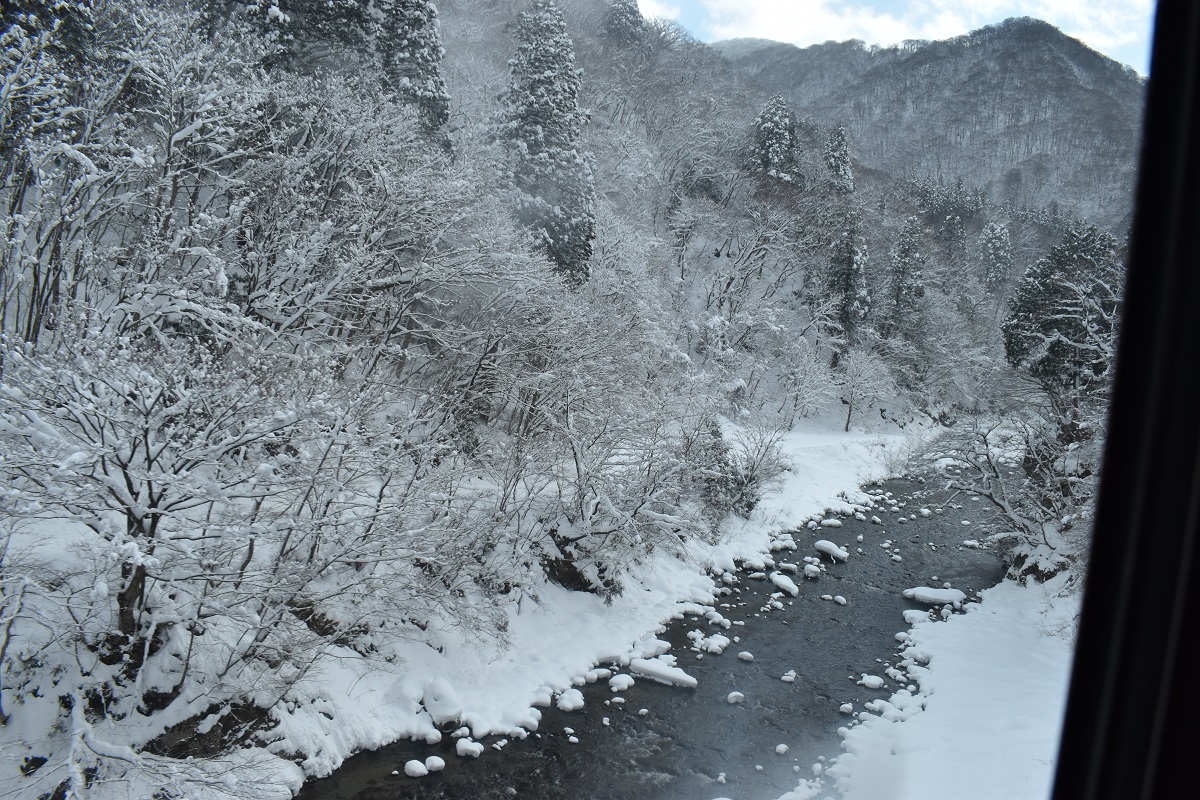
For backpackers coming from Sendai, I recommend getting off at the next station, Nakayama-daira Onsen, instead of Naruko Onsen Station (2.5 hours by JR from Sendai). The reason for this is that you can briefly glimpse the core of Naruko Gorge that you are about to see between the tunnels passing through the gorge, and the walk from the station to Naruko Gorge is short (about 30 minutes) and there is a flat footpath.

However, as soon as you get off the train, you’ll see a quiet village that makes you wonder if you’ve made a mistake. On the way to Naruko Gorge, you can see the steam rising from the hot spring village where the hot springs are gentle on the skin. You can stop by on your way home.
Naruko Gorge suddenly appears at the end of the pine forest. When viewed from the top of a steep cliff, it looks like a series of folding screens of autumn leaves.

In the gorge at the bottom right, you can clearly see the railroad tracks that the train passed through earlier. Many photographers are ready to take pictures of the train coming out of the tunnel exit on the cliff covered in autumn leaves.
Feeling depressed about the prospect of climbing back up, I descended from the steep cliff for 15 minutes and arrived at the deepest part of the gorge surrounded by cliffs covered in autumn leaves (Kaiko Bridge).
Returning to the top of the cliff, you can see the deep meandering of the Otani River, which created Naruko Gorge, from the midway point of Ohfukasawa Bridge, which is located directly above the Kaiko Bridge.
Beyond that bridge is the entrance to a quiet road that Edo period haiku poet Matsuo Basho wrote about in his travelogue on Oku no Hosomichi (about 45 minutes on the Ohfukasawa Promenade). There is “Shitomae barrier for defense” nearby.
“Shitomae barrier for defense”
The literal translation of the Japanese word naruko into English is a crying child. There is a theory that Naruko was named after the cry of a child that Minamoto no Yoshitsune’s wife gave birth to while he was on his way to Hiraizumi, and that the place was named “Shitomae barrier for defense” because the child urinated there for the first time.
Basho is said to have been suspicious of this barrier official when he was leaving for Yamagata, and he also wrote a poem in which he woke up to a horse urinating on his bedside in the stable of a private house where he was staying in the constant rain. However, it is said that this is just an exaggeration since they probably won’t be able to sleep in the stables. When I read that haiku for the first time, I believed it with all my heart.
“Plagued by fleas and lice,
I hear the horses urinating
Right by my pillow”

























































































































